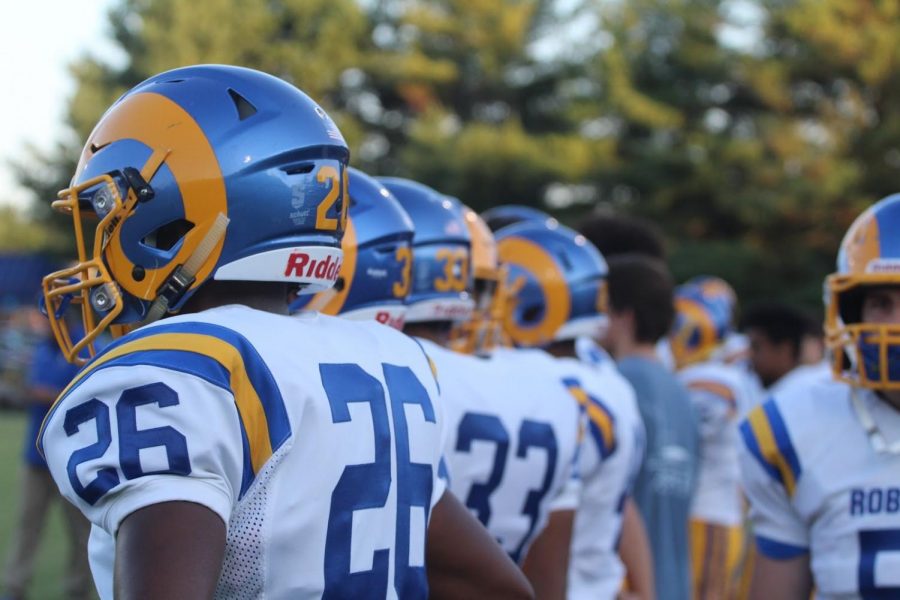Nerd, jock, emo, cheer-cat: the common stereotypes of high school have been beaten into students” heads on countless occasions.
However, a lesser-known realm where stereotypes run rampant is none other than the World Wide Web itself. With the vast majority of students being active on popular social media sites Facebook or Twitter (or both), chances are, they have experienced, or even interacted with, at least one of the five stereotypes described in detail below.
Please note that these stereotypes are not necessarily negative; rather, they are observations meant to shed some light on the often confusing, but never boring diversity students bring to the virtual table.
“Fab” One: The Future Sportscaster
Ever wonder exactly how many goals a Caps player scored in each individual period? Looking for a passionate reaction to a star player”s success at the plate, or lack thereof? Look no further than this poster, who is sure to post all of this information multiple times, whether their friends or followers like it or not. Although this stereotype is largely nocturnal, coming out during night games to provide commentary, it seems to become more prominent during the weeks leading up to the Super Bowl, the World Series, or the World Cup. The athletic antics of these users can range from mildly uninteresting to knee-slappingly entertaining; comical rivalries may flare up when sportscasters become passionate about opposing teams.
“Fab” Two: The Model Student
It has been said that a picture is worth a thousand words. However, this stereotype may feel a thousand pictures is more appropriate. Among all social media users, these individuals are among the most resourceful; all they need is a bathroom mirror and a glitter-encrusted phone to show off their natural (or man-made) beauty. Indeed, for photographers in training, gathering a few of these photogenic subjects can provide valuable experience. With the rise of Instagram, it is now easier than ever for awe-inspiring abs or bulging biceps to be shared with the world. As long as these users stop trying to seduce Donald Duck with their facial expressions, the eye-candy they provide is a welcome addition to sites everywhere.
“Fab” Three: The Sign-Toting Activist
The ease with which information can be spread over Facebook and Twitter gives these posters plenty of opportunities to promote causes of all shapes and sizes. Because of social media activists, the recently controversial Kony 2012 grew from a stifled whimper to a massive outcry, demanding justice for an obscure warlord. While this is all well and good, a more irritating side to this stereotype does exist: that of users who throw up a picture of a handicapped infant from Google Images, not to help promote awareness, but to draw attention to themselves. A common tactic these motivational wonders use is to demand that friends “share” their photo, dismissing them as a heartless jerk if they dare scroll past it. These attempts to create sympathy can flood news feeds to the point where legitimate causes are ignored alongside them in the process.
“Fab” Four: The Yosemite Sam
casinoder.com aligncenter” title=”angrysam” src=”https://valor-dictus.com/wp-content/uploads/2012/05/angrysam.jpg” alt=”” width=”164″ height=”188″ />
This steamy stereotype can easily be replicated by taking a Looney Tunes character, plopping in an obscenity or twelve, and giving them a keyboard; just add water. It is unusual to find a daily occurrence that -doesn”t- anger under these explosive personalities. When presented with a picture of a cuddly cat, this unruly user may begin a rant about why cats are so much worse than dogs, or perhaps why the cat cannot, in fact, have cheeseburger. Regardless of this stereotype”s behavior in person, the rigors of high school seem to light this user”s fuse faster than anything else. Common outburst topics include the difficulty of homework, the start times of school, or how terrible all boys or girls are, based on the actions of a few. Fortunately for passive observers, angry posters are not likely to take their frustration out on them…unless, of course, there”s even the slightest rumor that you”re “talking poop” about them.
“Fab” Five: The Comedian in Training
The final stereotype is often an extension of that of the “class clown”, albeit with even more facepalm-worthy comments to contribute. Thanks to the ease with which they can copy jokes from the Internet and pass them off as their own, these jokers often gain quite a few more admirers online than they otherwise would in real life. An alternate ploy for attention this stereotype uses quite frequently is that of posting “shocking” comments; these can range from detailed analysis of their bathroom habits, to flat-out insults. Much like a real comedian, the “success” of these posters depends entirely on their audience. Perhaps if a “social media clown” gains enough followers for discussing how their car smells like buttocks, they”ll start handing out balloons in the hallways after school?
Do you agree with my assessment of Robinson”s social media stereotypes? Are there any other stereotypes you”ve encountered on Facebook or Twitter? Leave a comment below, on the Valor Dictus Facebook page, or at @valordictus on Twitter.








